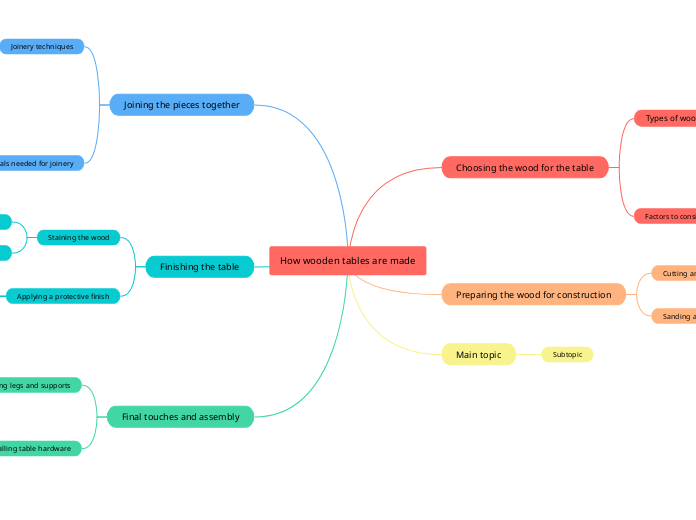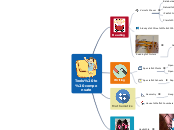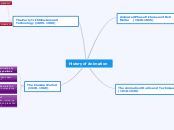How wooden tables are made
Final touches and assembly
Installing table hardware
Tabletop fasteners
Hinges
Drawer pulls
Attaching legs and supports
Techniques for attaching legs
Types of table legs
Cabriole legs
Straight legs
Tapered legs
Finishing the table
Applying a protective finish
Wax
Lacquer
Varnish
Staining the wood
Techniques for applying stain
Types of wood stain
Water-based stain
Oil-based stain
Joining the pieces together
Tools and materials needed for joinery
Screws or nails
Wood glue
Clamps
Joinery techniques
Butt joint
Dovetail
Mortise and tenon
Benefits of using this technique
How it works
Main topic
Subtopic
Preparing the wood for construction
Sanding and smoothing the wood
Techniques for sanding and smoothing
Importance of sanding
Cutting and shaping the wood
Techniques for cutting and shaping
Tools used for cutting and shaping
Choosing the wood for the table
Factors to consider when selecting wood
Color
Grain pattern
Durability
Types of wood commonly used for tables
Walnut
Benefits of using walnut for tables
Characteristics of walnut wood
Maple
Benefits of using maple for tables
Characteristics of maple wood
Oak
Benefits of using oak for tables
Characteristics of oak wood









